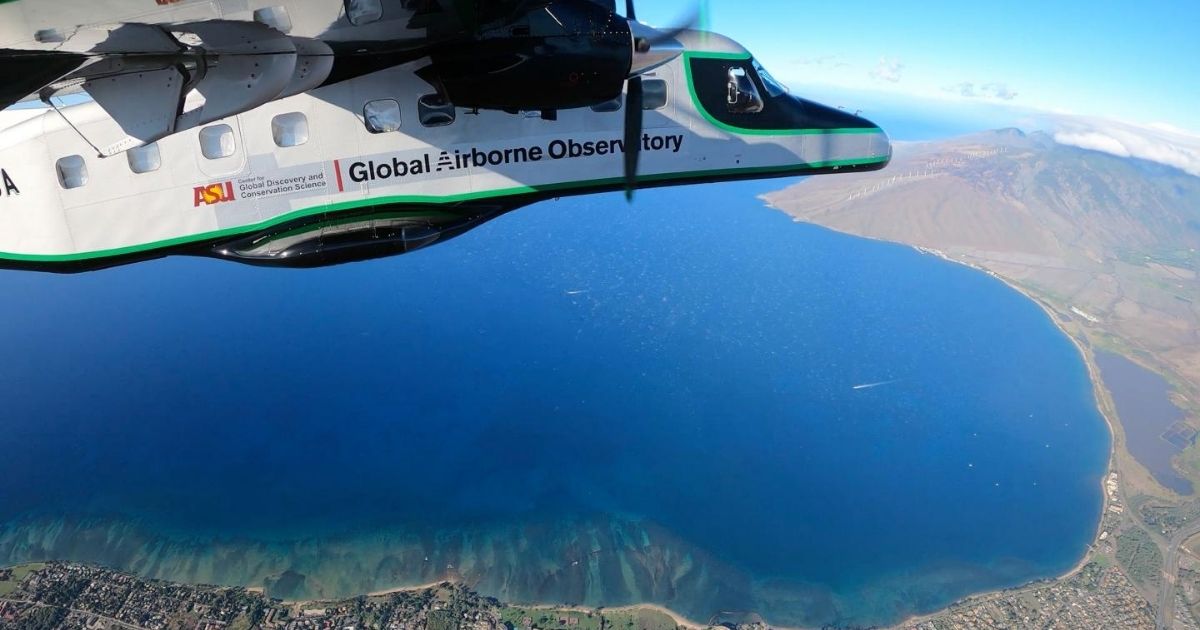Coral reefs are one of the most biodiverse ecosystems on the planet supporting an estimated 25 percent of all marine species.
These biologically rich ecosystems are threatened by multiple stressors, from warming ocean temperatures brought on by climate change to increases in water pollution from coastal development. According to current estimates, 75 percent of the world's coral reefs could face critical threat levels by 2050. Scientists widely agree that immediate and well-targeted action must be taken to preserve coral reefs for future generations. However, without a clear understanding of where live corals are found, management and conservation efforts will remain hampered at best and ineffective at worst.
Previous work to assess live coral cover has been constrained by technical limitations inherent to available surveillance approaches. For instance, detailed field-based surveys are geographically limited, while satellites cannot track corals at resolutions detailed enough for many types of management activities. Airborne technologies, however, can collect enormous tracts of contiguous high-resolution data within a single survey, providing insights into both coral health and extent. If the resulting maps can indicate the location of live corals, then specific strategies can be created to preserve, protect, and restore them.
A critical case in point is the Hawaiian Islands, an icon of the natural world and the modern-day stresses underway on reef ecosystems. Coastal development has resulted in hotspots of sedimentation, waterborne pollutants, and reef removal, while fishing and other resource uses have generated declines in reef resilience. Marine heatwaves, driven by a warming global climate, have also periodically engulfed the Hawaiian Islands, with the 2015 and 2019 coral bleaching events being the most recent. The 2015 event caused widespread coral death, but the geographic extent of coral loss or resistance has remained poorly understood, as it has in reef regions throughout the world.
Using a new airborne mapping approach developed by researchers at Arizona State University's Center for Global Discovery and Conservation Science (GDCS), the geographic distribution of live corals was, for the first time, quantified to 16 meters (51 feet) of water depth across the main Hawaiian islands. The study was published today in Proceedings of the National Academy of Sciences of the United States of America (PNAS).
"We undertook this first-ever mapping of a large archipelago to determine where corals live in Hawaiian waters despite repeated heatwaves and problematic coastal development issues," said Greg Asner, lead author of the study and director of GDCS. "It's this basic information that is needed by partner organizations to drive more cost-effective protections, restoration activities, and public engagement."
The mapping data were collected by the ASU Global Airborne Observatory, an aircraft-based laboratory developed by Asner and his team that houses advanced Earth mapping technology. By combining laser-guided imaging spectroscopy and artificial intelligence, the new approach reveals unprecedented views of coral reefs below the ocean surface. The maps show where live corals persist as well as areas of degraded reef.
"Operational mapping of live coral cover within and across Hawaii's reef ecosystems affords opportunities for managers and policy-makers to better address reef protection, resilience, and restoration," said Brian Neilson, head of Hawaii's Division of Aquatic Resources and study co-author. "With these new maps, we have a better shot at protecting what we have while focusing on where to improve conditions for corals and the myriad of species that depend upon corals."
The team's mapping of live corals was integrated with geospatial information on coastal and marine activities, and computer algorithms were used to estimate which factors most closely predict where corals are currently found on Hawaiian reefs. The results of the analysis revealed that nearshore development has a major negative relationship with live corals.
"Never before has there been such a detailed and synoptic view of live corals at this scale," said co-author Jamison Gove of the National Oceanic and Atmospheric Administration. "These findings are foundational for developing place-based conservation and management strategies to promote reef persistence and mitigate further losses in corals across Hawaii."
The new mapping approach also pointed out areas where corals show resilience to human-driven environmental stressors. These regions of coral survival, deemed 'refugia', suggest that some corals and some sites are more resilient, and are thus prime locations for enhanced coral conservation. Garnering a greater understanding of coral survivorship could also alter predictions of whether corals will survive in the current and future ocean climate.
"We are trying to make major leaps on the science and technology side to directly address coral reef conservation and management challenges, starting in the Hawaiian Islands," said Asner. "Our hope is that these outcomes will grow the discussion among communities, environmental managers, and elected officials, without which, we will continue to lose coral reefs right before our eyes."
By Arizona State University



